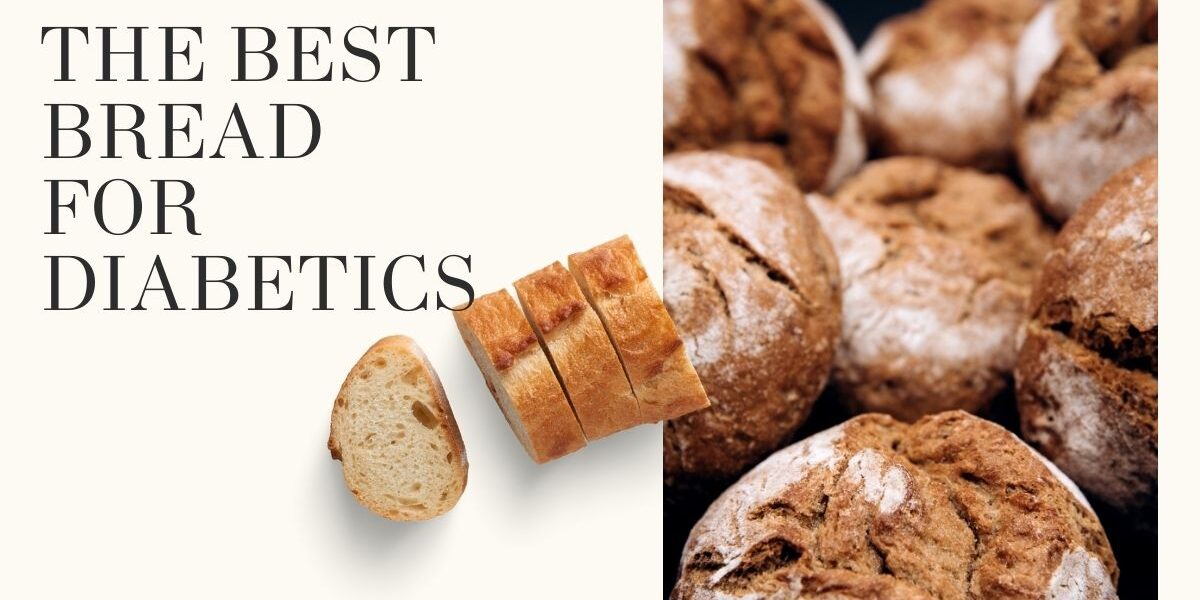Bread is a staple in many diets, but if you’re managing diabetes, you might be concerned about its impact on your blood sugar levels. The good news is that not all bread is off-limits. By choosing the right type of bread, you can enjoy it as part of a balanced diet. This guide will review different types of bread, their effects on blood sugar, and recommend the best options for diabetics.
Understanding Bread and Blood Sugar
Bread is primarily composed of carbohydrates, which can cause blood sugar levels to rise. The glycemic index (GI) of bread is a crucial factor to consider.Because it measures how quickly a food can raise blood sugar levels. Bread with a high GI can lead to spikes in blood sugar, while low-GI bread causes a slower, more gradual increase.
Best Bread Options for Diabetics
Here are some of the best types of bread for diabetics, focusing on those with lower carbohydrate content, higher fiber, and a low glycemic index.
1. Whole Grain Bread
- Why: Whole grain bread is made from the entire grain, including the bran, germ, and endosperm, which makes it rich in fiber and nutrients. The high fiber content slows down the digestion of carbohydrates, leading to a more gradual rise in blood sugar.
- Glycemic Index (GI): 50-55 (medium to low)
- Recommendation: Look for 100% whole grain or whole wheat bread. Avoid bread labeled “wheat bread” or “multigrain” without the “whole” prefix, as they may contain refined flour.
2. Sourdough Bread
- Why: Sourdough bread is made through a fermentation process that breaks down some of the carbohydrates, lowering its glycemic index. The fermentation process also makes it easier to digest.
- Glycemic Index (GI): 48-54 (low to medium)
- Recommendation: Choose whole grain sourdough for an even lower glycemic impact.
3. Rye Bread
- Why: Rye bread, especially whole grain rye, is dense and packed with fiber, which helps manage blood sugar levels. It’s also rich in magnesium, which is beneficial for insulin sensitivity.
- Glycemic Index (GI): 41-55 (low to medium)
- Recommendation: Opt for 100% whole grain rye bread. Light or mixed rye bread may contain refined flour, which can increase its glycemic index.
4. Sprouted Grain Bread
- Why: Sprouted grain bread is made from grains that have been allowed to sprout before being ground into flour. This process increases the bread’s nutritional value and lowers its glycemic index. Sprouted grains also have a lower carbohydrate content and higher protein, making them a great option for diabetics.
- Glycemic Index (GI): 35-45 (low)
- Recommendation: Look for bread made from 100% sprouted grains, such as Ezekiel bread, which is commonly available in health food stores.
5. Low-Carb Bread
- Why: Low-carb bread is specifically designed to have fewer carbohydrates per slice, often containing added fiber or protein to reduce the glycemic impact. These breads are excellent for managing blood sugar levels, as they contain minimal carbohydrates.
- Glycemic Index (GI): Varies, typically very low
- Recommendation: Look for bread labeled as “low-carb” or “keto-friendly.” Be cautious of added sugars and other high-GI ingredients.
Breads to Limit or Avoid
While some breads are better for managing blood sugar, others should be limited or avoided altogether:
1. White Bread
- Why: White bread is made from refined flour, which has been stripped of fiber and nutrients. It has a high glycemic index and can cause rapid spikes in blood sugar.
- Glycemic Index (GI): 70-85 (high)
- Recommendation: It’s best to avoid white bread and opt for whole grain alternatives.
2. Bagels
- Why: Bagels are dense and typically made from refined flour, making them high in carbohydrates and calories. They have a high glycemic index and can significantly raise blood sugar levels.
- Glycemic Index (GI): 72-103 (high)
- Recommendation: If you enjoy bagels, consider whole grain or low-carb versions, and eat them in moderation.
3. Flavored or Sweetened Bread
- Why: Flavored bread, such as cinnamon raisin or honey oat, often contains added sugars, which can increase the glycemic index and lead to blood sugar spikes.
- Glycemic Index (GI): Varies, generally high
- Recommendation: Stick to plain, whole grain bread without added sugars.
Tips for Choosing Diabetes-Friendly Bread
- Check the Ingredient List: Look for bread made with 100% whole grains. The first ingredient should be a whole grain, such as whole wheat, rye, or oats.
- Watch the Serving Size: Bread slices vary in size and thickness. Be mindful of portion sizes, especially with dense bread like rye or sourdough.
- Look for Added Fiber: Fiber slows down carbohydrate absorption, so bread with added fiber is a better choice for managing blood sugar.
- Avoid Added Sugars: Some bread contains added sugars, which can increase the glycemic index. Look for bread with little to no added sugar.
- Test Your Blood Sugar: Everyone reacts differently to carbohydrates. Monitor your blood sugar levels after eating bread to see how your body responds.
Conclusion
Choosing the right type of bread is crucial for managing diabetes. By opting for whole grain, sprouted, or low-carb bread, you can enjoy this dietary staple without compromising your blood sugar levels. Remember to check labels, monitor portions, and avoid high-GI options like white bread and bagels.
With these tips, you can make informed decisions and enjoy bread as part of a balanced, diabetes-friendly diet.





